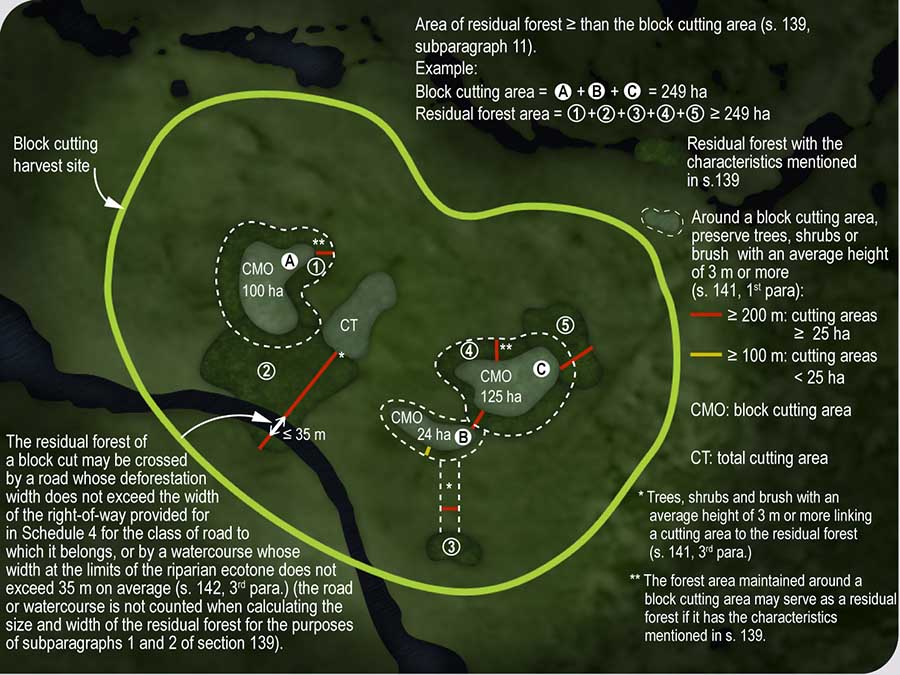Chapter VI – Allocation of forest operations and residual forest
Division II – Special provisions applicable to the bioclimatic domains of the sugar bush and the balsam fir forest
§3. Block cutting
Section 139
The residual forest of a block cutting must have the following characteristics:
- have, inside the limit of the block cutting harvest site, an area at least equivalent to the area of the cutting areas of a block cutting;
- have a width of at least 200 m;
- be composed of forest stands 7 m or more in height over at least 80% of its area and forest stands of at least 4 m in the remaining area;
- be composed of stands having a forest cover density greater than 40% over at least 80% of its area and from 25 to 40% over its remaining area. It may also be composed of stands having a forest cover density of 25 to 40% over more than 20% of its area, provided that that proportion is equal to or less than the proportion of the stands with such a density that are located in forests 7 m or more in height of the block cutting harvest site before the operation;
- be composed of forest stands that can produce in commercial species a volume of mature rough merchantable timber of at least 50 m3/ha or, where they cannot produce such a volume, be composed of forest stands equivalent in composition and in area to those harvested;
- be composed of forest stands belonging in a proportion of at least 20% to the same type of forest cover as those harvested;
- not have been the subject, in the last 10 years of harvesting, of a commercial harvest other than a sylvicultural treatment referred to in the second paragraph of section 142.

1
Objectives
- To distribute cutting areas and residual forest areas in space and over time
- To allow wildlife to move around by maintaining connectivity between its habitat and the neighbouring residual forest
- To maintain the components of the forest cover that provide shelter for wildlife
Additional information
Subsection 7
The residual forest of a block cutting must not have been the subject of a commercial harvest in the last 10 years of harvesting, unless the commercial harvest was carried out using a sylvicultural treatment referred to in the second paragraph of section 142, namely:
- a commercial thinning or selection cutting carried out according to the applicable sylvicultural prescriptions;
- a partial cutting in a mature tree stand or in a stand that will reach maturity in less than 15 years where not more than 35% of the marketable basal area of the stand is harvested, provided that after harvesting, a marketable basal area of at least 15 m²/ha of well-spaced trees composed of species and proportions similar to those of the initial stand, is maintained.
Figure 139 Size and composition of the residual forest at a block cutting harvest site

